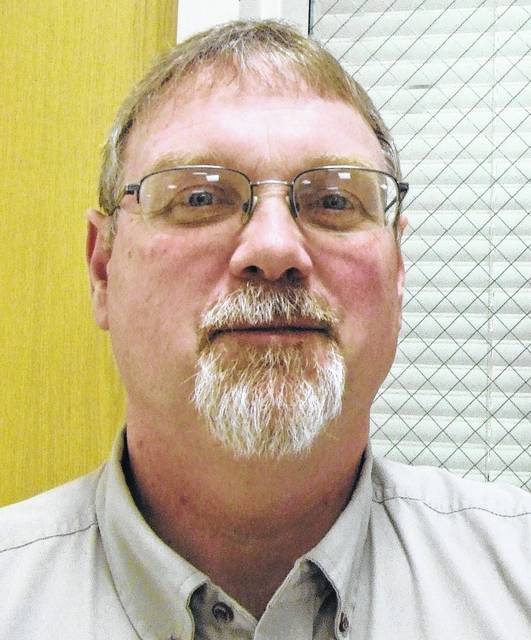
The Great Pumpkin granted my Halloween wish for sustained sunshine, dry weather, and continued harvest progress.
Several farmers are truly enjoying the best harvest conditions this fall. Many farmers will hopefully complete harvest by this weekend. Those that don’t will have at least made great strides.
The weather has been just outstanding. Some might call it Indian Summer since we had a killing frost last week. According to the Farmer’s Almanac, the criteria for a true Indian summer is:
• The atmosphere during Indian summer is hazy or smoky, there is no wind, the barometer is standing high, and the nights are clear and chilly.
• The warm days must follow a spell of cold weather or a good hard frost, but also be before first snowfall.
• The conditions described above also must occur between St. Martin’s Day (Nov. 11) and Nov. 20.
It may not have been hazy or smoky, and it certainly is not after Nov. 11, but I am calling it Indian Summer. Enjoy while you can!
Last week, I highlighted the upcoming 2020 Agricultural Policy and Outlook Conference slated for Nov. 9-13 from noon-2 p.m. each day and hosted by Ohio State University’s Department of Agricultural, Environmental and Development Economics.
Each day will focus on a different topic. Nov. 9 will be on agriculture finance; Nov. 10, agricultural and environmental policy; Nov. 12, agricultural trade and the health of the U.S. economy; and Nov. 13, grain, livestock and consumer demand projections. The webinars begin at noon and include a daily panel discussion at 1 p.m.
This week I want to highlight the last two days of the conference. On Thursday, Nov. 12, Trade and Macroeconomy Outlooks and will focus on trade during a global pandemic, transformations in China and the implications for global trade, and the influence that the US election may have on the global economy.
Few topics have been studied and debated as much as international trade in recent memory. What is the outlook for the U.S. in an era where there has been a shift from multilateral to bilateral management of both trade and trade disputes?
Add in a global pandemic that has shocked markets, slowed economic growth, and decreased consumer confidence — how does the U.S. economy adapt to these impacts? With the shift to bilateralism, the U.S. and China agreed to a Phase 1 deal in January 2020, putting specific targets on Chinese purchases of U.S. commodities, energy, manufactured goods, and services.
The legal status of this deal and managing trade, remains an issue, but will it matter?
Ian Sheldon, Professor in AEDE and Andersons Chair of Agricultural Marketing, Trade, and Policy, will kick off session three discussing the impact of the pandemic on global and U.S. trade as well as commenting on the direction of U.S. trade policy post-election.
Wendong Zhang, Assistant Professor and Extension Economist from Iowa State University, will cover agricultural transformations in China and how they could impact global trade.
Mark Partridge, Professor in AEDE and Swank Chair in Rural-Urban Policy will round out the presentations with an outlook on the U.S. economy post-election. Large increases in federal stimulus through interest rate cuts, federal infusions of cash, and increases to the Federal Reserve.
The session concludes with a panel discussion titled “Impacts and Importance of Global Trade on our Businesses, Communities and Livelihoods.”
Friday, Nov. 13 will focus on Consumer Demand and Commodity Outlooks.
The final day will cover consumer demand for food products, supply and demand fundamentals for row crops, and the current health of the U.S. livestock sector. Consumer confidence has continued to increase, reaching a six-month high in September, according to the consumer confidence sentiment survey.
This is the highest level for the index since the pandemic disrupted consumer behavior in March, but there is still significant uncertainty about “if and when” consumer behavior will return to pre-COVID patterns.
Increases in COVID-19 cases in parts of the U.S. have delayed plans to reopen the economy, shuttered food service institutions, and reduced gas consumption. COVID-19 has had differing impacts on producers depending on type of product produced, end market, and product distribution.
Zoë Plakias, Assistant Professor of Agricultural, Environmental and Development Economics, will kick off session four with an outlook on consumer demand heading into 2021.
Ben Brown, Assistant Professor of Professional Practice in Agriculture Risk Management, will provide an outlook of row crops and price expectations for producers for the remainder of the marketing year, which ends in August as well as a short term outlook for soybean crush, corn used for ethanol, and exports.
The final presentation will be William (Bill) Hahn, Agricultural Economics with the United States Department of Agriculture’s Economic Research Service, on the forecast for meat supply and demand over the next several quarters.
The session concludes with a panel discussion titled “Adapting and Preparing for Continued Volatility in Commodity Markets.”
The 2020 Agricultural Policy and Outlook Conference will be offered virtually, and free of charge. Information about all sessions and registration can be found at: https://aede.osu.edu/programs/20202019-agricultural-policy-and-outlooks.
Tony Nye is the state coordinator for the Ohio State University Extension Small Farm Program and has been an OSU Extension Educator for agriculture and natural resources for over 30 years, currently serving Clinton County and the Miami Valley EERA.


